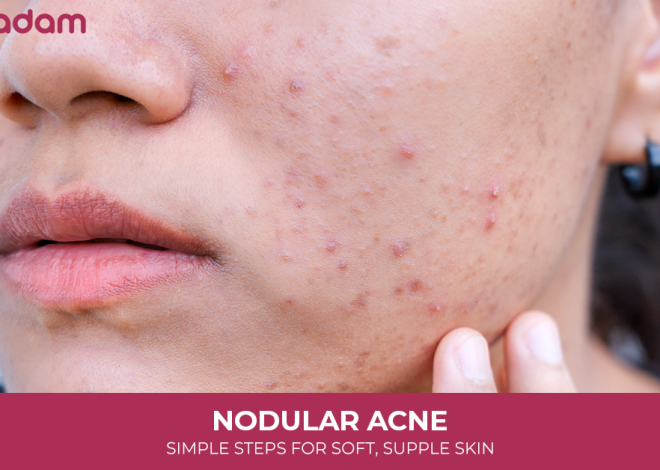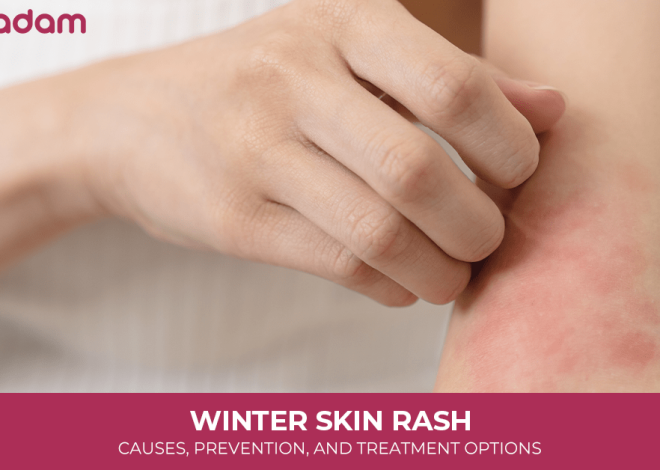
Laser Stretch Mark Removal: Effective Solutions to Achieve Smoother Skin
Stretch marks, whether they appear during pregnancy, from rapid weight changes, or after a growth spurt, are a frustrating reminder of the body’s changes.
But that does not imply that you have to bear the burden of stretch marks all your life.
Laser treatments have emerged as the most promising yet effective ways to fade stretch marks and boost your confidence.
Read this guide on laser stretch mark removal to explore the various laser options available to remove stretch marks, their benefits, side effects, and a brief overview of natural alternatives to remove stretch marks.
More Information For You: Laser for Melasma Treatment
Table of Contents
Can Laser Remove Stretch Marks?

The answer is YES. Stretch marks, also called striae, are a type of scar. Although they are harmless, they can be a cosmetic concern for many people that’s where lasers can help.
While lasers may not completely eliminate stretch marks, they can significantly reduce their appearance by stimulating the skin’s natural healing process. Lasers work by targeting the affected areas and encouraging the production of new elastin and collagen, which improves skin tone, elasticity, and texture.
Here are the top reasons for choosing laser therapy for stretch marks :
- Non-invasive FDA-approved procedure.
- Lesser need for pain medication post-treatment.
- Collagen promotion for new skin production.
- Decreased Inflammation.
- Better blood circulation in the treatment area.
- Better immune and healing response.
- Improved lymphatic drainage, leading to reduced swelling.
Don’t Miss: Laser Treatment for Pimples
Types of Lasers for Stretch Marks Removal Explained

Not all lasers are the same, and the successful treatment of stretch marks is based on different laser therapies, as highlighted below:
Ablative lasers
These lasers follow similar treatment patterns to those of chemical peels or dermabrasion. They are made to remove the layers of your skin so that new skin cells can grow back in their place. These lasers work especially well on textured stretch marks that may leave small grooves in your skin.
Fractional lasers
Fractional lasers work by creating small holes along the stretch marks to target the laser beam of light into much stronger doses onto your discolourations. Such lasers may be both ablative and non-ablative and are generally used to treat skin issues like stretch marks.
Fraxel
Fraxel laser for stretch marks is inherently good for most scar types and stretch marks. It works by promoting the formation of new, remodelled collagen tissue. It can help to flatten thick scars or build up the dermis if there is an indentation.
Pulsed dye or KTP laser
If your stretch marks are still fresh or new, try this laser therapy. To minimize redness and inflammation, the therapy targets the blood vessels in your skin while also simultaneously promoting healing and collagen growth.
Laser resurfacing
Laser resurfacing is a widely used laser treatment for stretch marks. The treatment includes targeting light emitted by ablative lasers to the dermal and epidermal layers to promote improved skin texture and better collagen remodeling.
The Risks of Laser Therapy for Stretch Mark Removal
Laser therapy for stretch mark removal is generally safe but can have some risks, including temporary side effects like redness, swelling, and itching.
Potential Risks and Side Effects:
Common Side Effects:
- Redness and swelling: These are typical reactions after laser treatment and usually subside within a few days.
- Mild discomfort: Some patients experience a sunburn-like sensation in the treated area.
- Itching and rash: These are also relatively common, especially in the initial days after treatment.
Less Common but More Serious Risks:
- Hyperpigmentation or hypopigmentation: Changes in skin color, particularly darkening or lightening of the treated area, can occur, especially in individuals with darker skin tones.
- Scarring: Though rare, scarring can occur, especially if proper aftercare is not followed.
- Infection: While less common, infection is a possibility if hygiene is not maintained during the healing process.
- Burns: Improper use of the laser or inadequate cooling techniques can lead to burns, according to a cosmetic dermatology clinic.
Minimizing Risks:
Choose a qualified practitioner: Selecting a dermatologist or other qualified professional experienced in laser stretch mark removal is crucial.
Follow pre- and post-treatment instructions: This includes avoiding sun exposure, certain medications, and skincare products before treatment, and maintaining proper hygiene and sun protection afterwards.
Be aware of potential side effects: Understanding the possible side effects can help you prepare and manage them effectively.
Additional Considerations:
- Type of laser: Ablative lasers are generally more effective but also carry a higher risk of side effects than non-ablative lasers.
- Skin type: Individuals with darker skin tones may be more prone to hyperpigmentation.
- Individual healing response: The body’s healing response varies, so the duration and severity of side effects can differ between individuals.
Related Blog: Laser Treatment for Dark Spots
How to Remove Stretch Marks Naturally? 5 Natural Ingredients/Remedies for Stretch Marks
There is no perfect solution for stretch marks, but natural remedies can be equally effective to promote healing and even out your skin tone, just like the aforementioned laser varieties:
1. Hyaluronic acid
- What it is: It is a powerful ingredient for skin healing and moisturizing.
- Best used as: Mostly used in serums, creams, and lotions.
- Benefits for stretch marks: It can improve the appearance of stretch marks through its potential to impact skin elasticity.
2. Centell
- What it is: A type of herb and a popular ingredient in korean (K-beauty products.
- Best used as: Cica creams to calm and repair sensitive skin.
- Benefits for stretch marks: Creams containing centella help reduce inflammation and prevent stretch marks during pregnancy and may improve their apperance.
3. Aloe Vera
- What it is: Aloe vera is a plant that has a long history of being used as a natural skin treatment.
- Best used as: Aloe vera gel, aloe-vera infused skin and beauty products.
- Benefits for stretch marks: Aloe vera is known for its skin-repairing properties that may also help with stretch mark prevention and fading.
4. Sugar scrub
- What it is: Sugar is an excellent exfoliator that helps eliminate dead skin cells and fade out stretch marks.
- Best used as: Sugar scrub (by mixing with lemon juice, olive oil) to apply over stretch marks.
- Benefits for stretch marks: The small crystals gently scrub away dead skin and help stretch marks fade.
5. Dietary home remedies
- Enough Hydration: Drinking 8-10 liters of water every day helps decrease stretch marks and improve the elasticity of skin.
- Healthy and balanced diet: A Diet rich in vitamin C, like spinach, tomato, helps the stretch marks heal faster. Similarly, foods with vitamin E (pumpkin and papaya) and omega-3 fatty acids help improve skin elasticity and reduce the appearance of stretch marks.
Conclusion
The key benefit of opting for a laser stretch mark removal lies in not making the stretch marks disappear 100 percent, but in improving their appearance dramatically. The top 5 laser treatments for stretch marks not only make your skin smoother but also make its texture blend better with the surrounding skin tissue.
Still, to get the best results, it is necessary to customize your treatment by combining lasers with medical treatments like chemical peels, microdermabrasion, microneedling, and other effective natural remedies as per the underlying cause of stretch marks and your skin goals.
FAQs
Does laser stretch mark removal work?
Both yes and no. Laser treatment can significantly improve the appearance of stretch marks, but it’s unlikely to completely remove them.
How many laser sessions do I need for stretch marks?
To achieve the best results, you should ideally have 3-5 sessions, especially if the stretch marks are old and deep. After your first treatment, you should have a repeat session 1 time in a year.
What is the cost of laser treatment for stretch marks?
The average cost for laser treatment for stretch marks in India typically ranges from ₹3,500 to ₹8,000 per session.
How long does laser treatment for stretch marks last?
The benefits of stretch mark removal with lasers can last for many years, but there are some factors that can play a role in its longevity. Stretch marks may reappear during times of significant hormone or weight fluctuation.
What are the side effects of laser stretch mark removal?
The most common side effect is skin irritation. This may include blistering in the treatment area, swelling, and redness.
Which laser is best for stretch marks?
While no laser treatment can eliminate stretch marks, fractional lasers, particularly Fraxel and fractional CO2 lasers, are often recommended for improving their appearance.
Is laser stretch mark removal painful?
Laser treatment for stretch marks is usually not very painful. While some patients may experience mild discomfort, it’s often described as a mild sensation.
What to do after laser stretch mark removal?
Keep the area moist with Vaseline until inflammation resolves and the area is healed. Wash treated areas using a gentle cleanser. No exfoliants for 48 hours.
How long does laser stretch mark removal take to produce results?
It generally takes between 4 and 6 laser treatments, spaced one month apart, to significantly improve the appearance of stretch marks and rejuvenate skin.
How to fade stretch marks fast?
The fastest way to fade stretch marks often involves a combination of treatments, including laser or light therapies, and prescription-strength retinoids like tretinoin.



